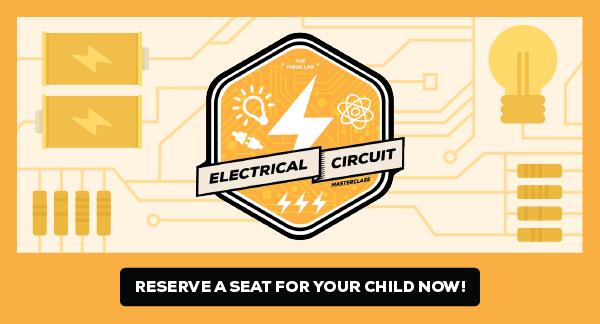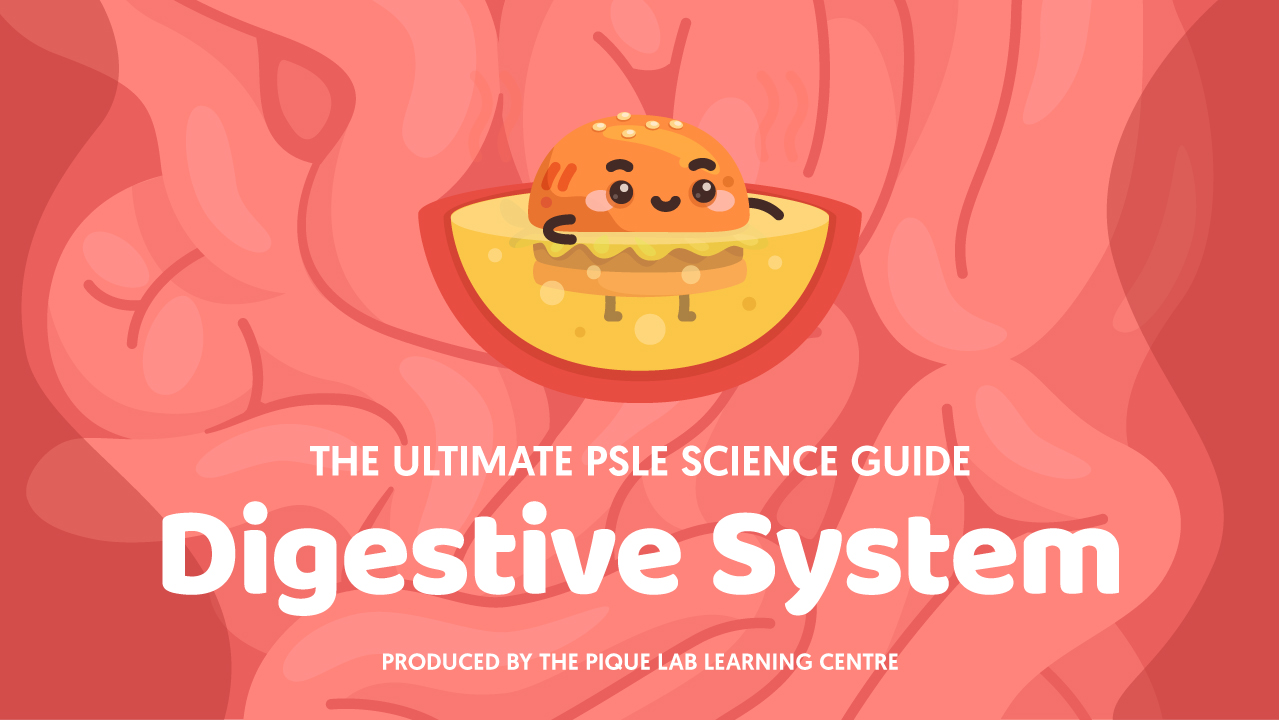For those of you who have pets at home, have you ever felt that it is difficult to seek help from your friends or family members to feed your pets when you are going overseas, for fear that you might inconvenience them?
Don’t you wish your pets can be fed automatically even in your absence?

Read Also:
Good news for all pet owners, there is indeed a way to do so by using automatic pet feeders!
But, how do they work?
To answer this question, I will be discussing an Electricity question from the 2017 P6 SA2 Methodist Girls’ School (Primary) (MGS) Examination Paper, where we can gain an understanding of how automatic bird feeders work using electromagnets.
Question Analysis

Source: Methodist Girls’ School (Primary) (MGS) – 2017 P6 SA2 Examination Paper [Q41]
Thought Process
To understand how the automatic bird feeder in the above diagram works, we have to take a look at three different cases.
Case 1: When The Food Tray Is Empty

When tackling questions on Electricity, I would ask my students this question first:
“What is the situation that we see in the electrical circuit?”
When the food tray is empty, we see that Part Y is in contact with the contacts in the circuit.
After understanding that Part Y is in contact with the contacts in the circuit, the next question to ask ourselves is as follows:
“Is there a closed/open circuit based on the above observation?”
Since the original “gap” in the circuit is being closed up by Part Y, there should be a closed circuit with the coils of wires.
Having inferred that there is a closed circuit with the coils of wires, the next question to ask yourself is this:
“Is there electric current flowing through the coils of wires?”
Since there is a closed circuit with the coils of wires, there should be electric current flowing through the coils of wire.
After identifying that there is electric current flowing through the coils of wires, the last guiding question to ask ourselves is this:
“What is the outcome when electric current flows through the coils of wires around the iron rod?”
Since there is electric current flowing through the coils of wires around the iron rod, which is made of a magnetic material, the iron rod will be magnetised to become an electromagnet.
What do you observe about the position of object X? Object X is at a distance away from the electromagnet.
What can we infer about object X then?
This shows that object X is either:
- A non-magnetic material that was not attracted to the electromagnet.
OR
- A magnet that is repelled by the electromagnet
We shall find out if object X is a magnet or a non-magnetic material when analysing Case 2 below.
Regardless of the identity of object X, the gap between object X and the electromagnet creates an opening in the dispenser. This causes the bird food to flow out and fill the food tray below it.
Here is a quick summary of how the food tray gets refilled when it becomes empty:

Now that we have understood how the food tray gets filled up when it is empty, let us analyse how the food tray stops being filled up when it is full.
Case 2: When The Food Tray Is Filled

Using the same set of guiding questions in Case 1 above:
“What is the situation that we see in the electrical circuit?”
When the food tray is filled, the spring is compressed and we see that Part Y is no longer in contact with the contacts in the circuit.
After understanding that Part Y is no longer in contact with the contacts in the circuit, the next question to ask ourselves is as follows:
“Is there a closed/open circuit based on the above observation?”
Since Part Y no longer closes the original “gap” in the circuit, there should be an open circuit with the coils of wires.
Having inferred that there is an open circuit with the coils of wires, the next question to ask yourself is this:
“Is there electric current flowing through the coils of wires?”
Since there is an open circuit with the coils of wires, there should be no electric current flowing through the coils of wire.
After identifying that there is no electric current flowing through the coils of wires, the last guiding question to ask ourselves is this:
“What is the outcome when no electric current flows through the coils of wires around the iron rod?”
The iron rod will be demagnetised back into a magnetic material.
What do you observe about the position of object X? Object X moved towards the iron rod.
What can we infer about object X then?
Since Object X moved towards the iron rod, which is made of a magnetic material, this shows that object X attracted the iron rod and we can now confirm:

What happens when object X moved towards the iron rod?
As object X attracted the iron rod, the opening in the dispenser is closed up, preventing more bird food from being released.
Here is a quick summary of what happens when the food tray gets filled:

A happy moment for the birds, feeding time is here! However, as the birds finish up all the food in the food tray, the next question we can ask is:
“What would happen when the birds ate all the food in the food tray?”
When all the food has been eaten by the birds, the food tray would be empty. As seen in Case 1 Diagram 1 above, when the food tray is empty, both the food tray and the compressed springs would move upwards until the springs return back to their original length and are no longer compressed.
The next question we can ask is:
“What would happen when the springs move upwards?”
Part Y will touch the contacts in the electrical circuit, just like Case 1 above and the entire cycle will repeat itself from Case 1 to Case 3.
Here is a quick summary of what happens when the birds finish up the bird food in the food tray:
Case 3: When The Birds Finish The Bird Food In The Food Tray

Combining all the 3 cases above, we can now see that the entire cycle repeats itself to allow the bird feeder to refill the food tray with bird food when empty and also to stop refilling the food tray with bird food when full:

Final Analysis Of Part (A)
(a) State the property of the material used to make Part Y which allows the set-up to work.
As discussed in Case 1 (When the food tray is empty), electric current was able to flow through the coils of wires and Part Y in the closed circuit traced out in blue for the iron rod to become an electromagnet.
Thus, Part Y must allow electric current to flow through and it must be a conductor of electricity!
Suggested Answer For Part (A)
The material used to make Part Y is a conductor of electricity.
Final Analysis Of Part (B)
(b) Explain how the iron rod becomes an electromagnet when the originally filled food tray is now empty.

As discussed in Case 1 (When the food tray is empty) and Case 3 (When the birds finish up the bird food in the food tray) above, let us consolidate how the iron rod becomes an electromagnet when the birds finish up the bird food in the food tray:

After consolidating the concepts, it is important to remember the template structure required to explain why there is an open/closed circuit for Electricity questions.
As such, I will always remind my students to apply the 4-step template structure to avoid missing links in their Electricity answers:
Step 1: State the situation.
Step 2: Identify if there is an open/closed circuit.
Step 3: Determine if there is electric current flowing through the circuit.
Step 4: State the outcome.
Try applying the above four steps to your answer and see if you manage to get the same answer as me!
Suggested Answer For Part (B): P5 Students
When the food tray is empty, the compressed springs move upwards and return back to their original length, pushing the tray upwards as well. This causes Part Y to touch the contacts in the circuit (Step 1), creating a closed circuit with the coils of wire around the iron rod (Step 2). Electric current would flow through the coils of wire (Step 3), causing the iron rod to be magnetised to become an electromagnet (Step 4).
How about P6 students then?
The above answer is incomplete for P6 students as there are no Forces concepts mentioned.
Since this question involves Forces concepts, which the P6 students have learnt, they are required to integrate both Forces and Electricity concepts in their answers to be awarded full marks.
“How do we explain, in terms of forces, why the compressed springs and the food tray move upwards when the food tray is emptied of food?”
It must be the elastic spring force exerted by the compressed springs upwards on the tray that moves the tray upwards and return the compressed springs back to their original length.
Here is a quick summary (incorporating Forces concepts) of how the iron rod becomes an electromagnet when the food tray is emptied out:

Suggested Answer For Part (B): P6 Students
When the food tray is empty, elastic spring force exerted by the compressed springs upwards on the food tray causes the food tray to move upwards as the compressed springs return back to their original length. This causes Part Y to touch the contacts in the circuit (Step 1), creating a closed circuit with the coils of wire around the iron rod (Step 2). Electric current would flow through the coils of wire (Step 3), causing the iron rod to be magnetised to become an electromagnet (Step 4).
Summary
In this article, we have discussed how the automatic bird feeder works using an electromagnet.
I have also shared the 4-step template structure for you to avoid missing links when explaining Electricity questions.
💫 Fun fact: There are actually many different types of bird feeders other than the one discussed in the question:
- Automatic cage bird feeders (as discussed in the question).
- Tube feeders
- Nectar feeders
- Hopper feeders
- Mesh feeders
- Squirrel-resistant feeders
If you would like to find out more about the different types of bird feeders, please refer to the following link: https://www.businessinsider.com/best-bird-feeder
Stay tuned for more articles! 🙂

If you like our approach behind solving 'Electricity' questions, perhaps you may be interested to check out our upcoming Electrical Circuit Masterclass where we'll dive deep into several answering techniques and practice questions.
Click Here To Learn More About The Electrical Circuit Masterclass >>







